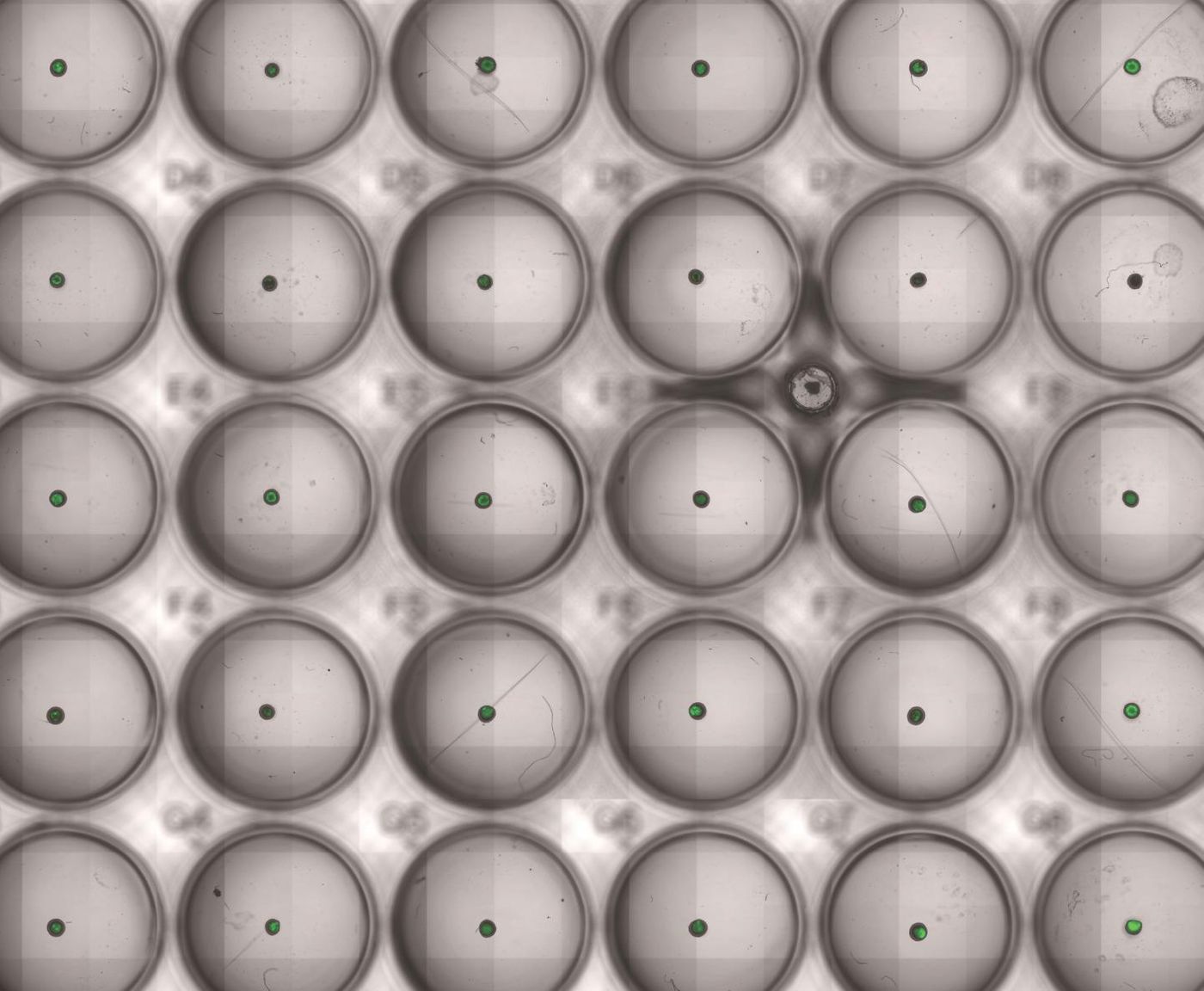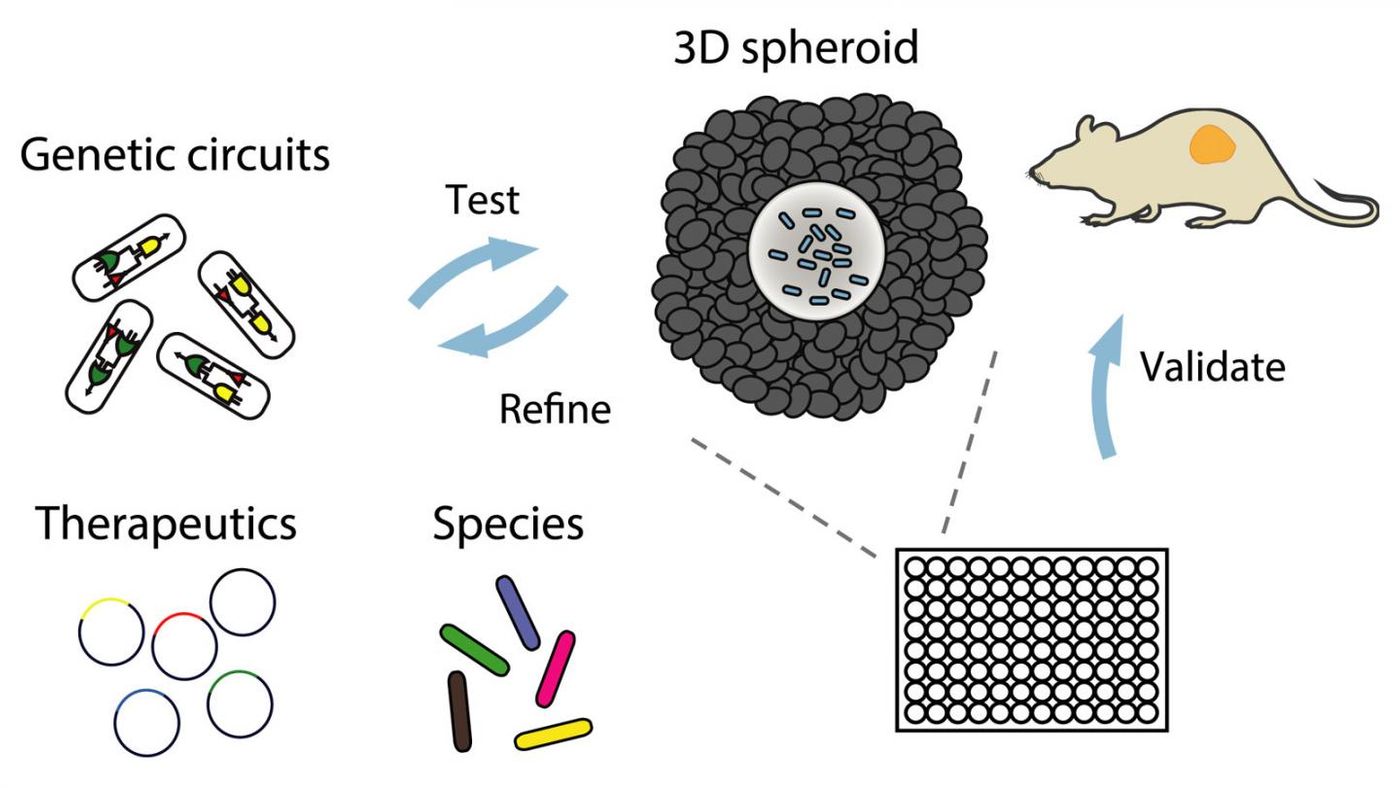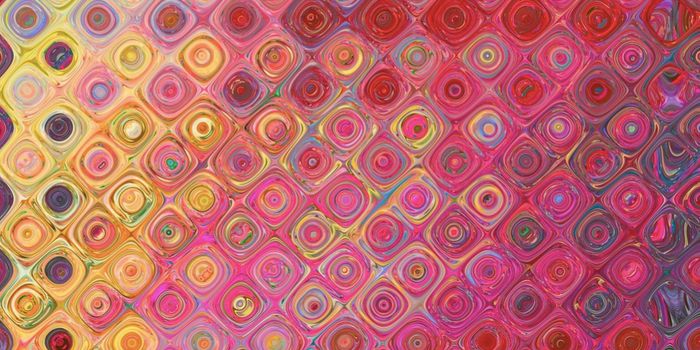Using Engineered Bacteria to Rapidly Evaluate Therapeutics
Scientists are using genetic tools to engineer bacteria in many ways. These new microbes are able to mimic or sense disease states, so that researchers can use them to study illness, like infectious pathogens or cancer. These genetic techniques that program bacterial cell behavior can also be used to create circuits that not only act as sensors but are also responders, for example, creating therapeutic molecules in certain situations. These engineered microbes can also be used to test treatments or act as delivery systems, like a kind of living medicine.
Now, scientists from Columbia Engineering report a method for using programmed bacteria as a kind of miniaturized tissue that can model tumors. The technique, called "bacteria spheroids co-culture," or BSCC, has been reported in the Proceedings of the National Academy of Sciences (PNAS); it is a high-speed method for rapidly evaluating therapeutics.
"We're very excited at how efficient BSCC is and think it will really accelerate engineered bacterial therapy for clinical use," said the research leader Tal Danino, an assistant professor of biomedical engineering. "By combining automation and robotics technology, BSCC can test a large library of therapies to discover effective treatments. And because BSCC is so broadly applicable, we can modify the system to test human samples as well as other diseases. For example, it will help us personalize medical treatments by creating a patient's cancer in a dish, and rapidly identify the best therapy for the specific individual."
The microenvironment of a tumor impairs the local immune response, and bacteria that would be killed if it was elsewhere in the body is able to grow in the tumor. The researchers used that knowledge; they used an antimicrobial agent, an antibiotic called gentamicin, and cultured bacteria in spheroids, mimicking tumors in the body. With the BSCC technique, they were able to quickly assess many different programmed anticancer bacterial therapies like genetic circuits or engineered microbes.
"We used 3D multicellular spheroids because they recapitulate conditions found in the human body, such as oxygen and nutrient gradients; these can't be made in a traditional 2D monolayer cell culture," said the lead author of the report Tetsuhiro Harimoto, a graduate candidate working in Danino's lab. "In addition, the 3D spheroid provides bacteria with enough space to live in its core, in much the same way that bacteria colonize tumors in the body, also something we can't do in the 2D monolayer culture. Plus, it's simple to make large numbers of 3D spheroids and adapt them for high-throughput screening."
The team was able to use BSCC as a high-throughput way to characterize batches of programmed bacteria and identify those that show the most promise. They found a novel bacterial toxin called theta toxin, which has significant impacts on colon cancer when combined with a delivery circuit that uses attenuated Salmonella Typhimurium. Anticancer therapeutic efficacy was also improved by some bacterial therapeutics they tested.
The scientists are hopeful that this work will have additional applications. They would like to use BSCC for microbial therapeutics that apply to other diseases, like infectious illnesses and gastrointestinal disorders.
Sources: AAAS/Eurekalert! via Columbia University School of Engineering and Applied Science, PNAS










